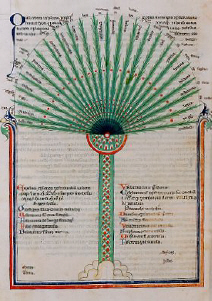3. And the soul includes a faculty peculiarly addressed to Beauty- one incomparably sure in the appreciation of its own, never in doubt whenever any lovely thing presents itself for judgement.
Or perhaps the soul itself acts immediately, affirming the Beautiful where it finds something accordant with the Ideal-Form within itself, using this Idea as a canon of accuracy in its decision.
But what accordance is there between the material and that which antedates all Matter?
On what principle does the architect, when he finds the house standing before him correspondent with his inner ideal of a house, pronounce it beautiful? Is it not that the house before him, the stones apart, is the inner idea stamped upon the mass of exterior matter, the indivisible exhibited in diversity?
So with the perceptive faculty: discerning in certain objects the Ideal-Form which has bound and controlled shapeless matter, opposed in nature to Idea, seeing further stamped upon the common shapes some shape excellent above the common, it gathers into unity what still remains fragmentary, catches it up and carries it within, no longer a thing of parts, and presents it to the Ideal-Principle as something concordant and congenial, a natural friend: the joy here is like that of a good man who discerns in a youth the early signs of a virtue consonant with the achieved perfection within his own soul.
The beauty of colour is also the outcome of a unification: it derives from shape, from the conquest of the darkness inherent in Matter by the pouring-in of light, the unembodied, which is a Rational-Principle and an Ideal-Form.
Hence it is that Fire itself is splendid beyond all material bodies, holding the rank of Ideal-Principle to the other elements, making ever upwards, the subtlest and sprightliest of all bodies, as very near to the unembodied; itself alone admitting no other, all the others penetrated by it: for they take warmth but this is never cold; it has colour primally; they receive the Form of colour from it: hence the splendour of its light, the splendour that belongs to the Idea. And all that has resisted and is but uncertainly held by its light remains outside of beauty, as not having absorbed the plenitude of the Form of colour.
And harmonies unheard in sound create the harmonies we hear, and wake the soul to the consciousness of beauty, showing it the one essence in another kind: for the measures of our sensible music are not arbitrary but are determined by the Principle whose labour is to dominate Matter and bring pattern into being.
Thus far of the beauties of the realm of sense, images and shadow-pictures, fugitives that have entered into Matter- to adorn, and to ravish, where they are seen.
